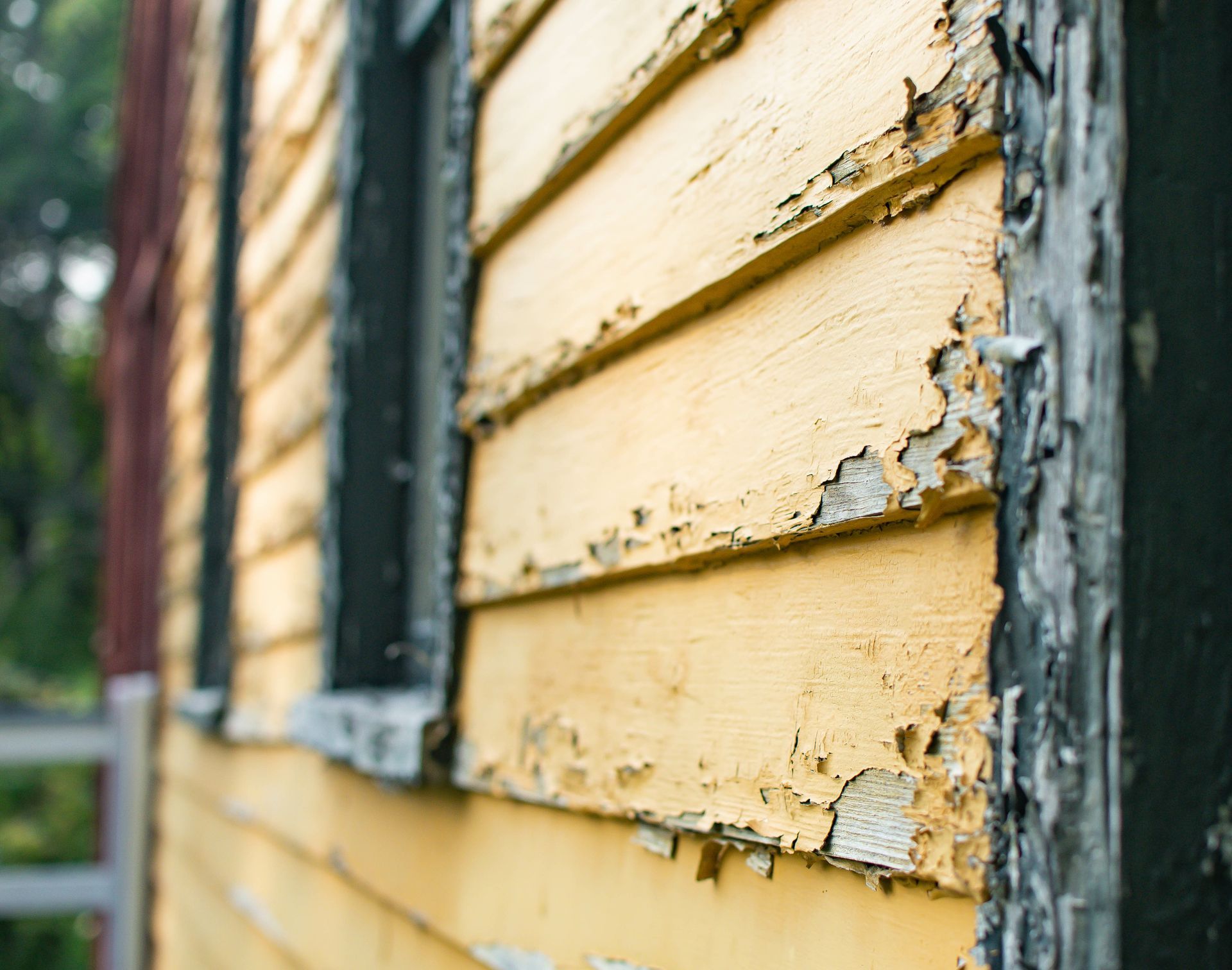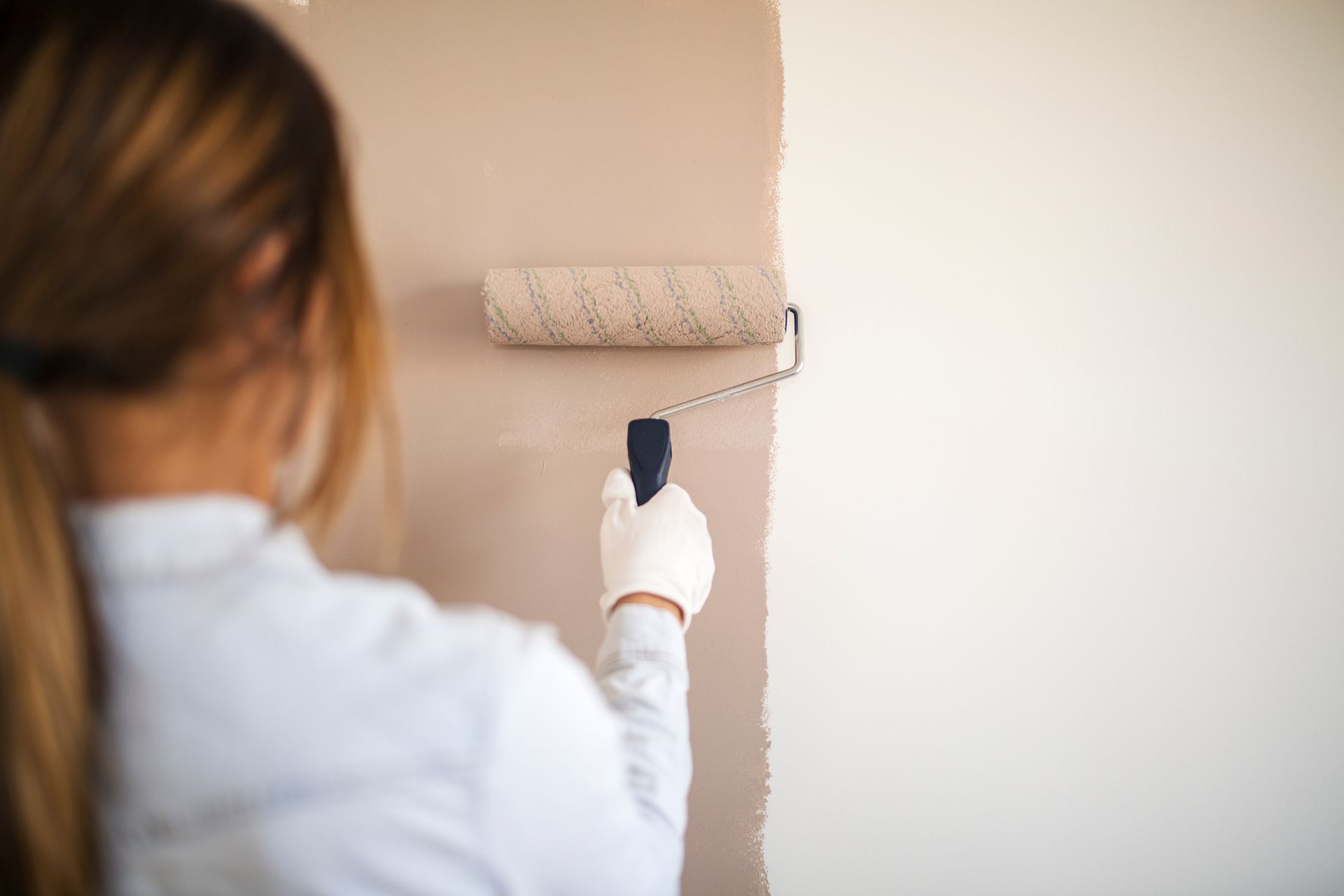Discovering chipping or peeling paint on your house can be a disheartening experience. Not only does it mar the aesthetics of your home, but it can also expose the underlying surface to damage from the elements. But don't worry, this common issue is fixable, and taking timely action can prevent further damage and save you money in the long run.
Let's guide you through the steps you should take when your house paint starts to chip or peel.
The Causes of Chipping and Peeling - Why is my house paint peeling off?

Understanding the root causes of chipping and peeling is essential before undertaking any repair work. Only by diagnosing the underlying issue can you implement a lasting solution.
Here are some of the key factors contributing to chipping and peeling paint, each explained in more detail:
1-Poor Surface Preparation
When the surface to be painted is not properly prepared, it can lead to a weak bond between the paint and the substrate. This can result from inadequate cleaning, failure to remove old paint, or not applying a primer. A poorly prepared surface will have contaminants like dust, dirt, or oils, which prevent the paint from adhering correctly. Over time, these weak spots can lead to localized or widespread peeling.
Solutions:
- Always clean the surface thoroughly before painting.
- Remove any old, flaky paint.
- Use a high-quality primer tailored to the type of surface you're painting.
2-Environmental Factors
Extreme weather conditions can significantly impact the lifespan of an exterior paint job. High levels of humidity can prevent the paint from curing properly, while prolonged exposure to direct sunlight can cause it to fade and become brittle. In colder climates, freezing and thawing cycles can also cause paint to crack and eventually peel.
Solutions:
- Consider the weather forecast when planning your painting project.
- Use paints specifically formulated to withstand your local climate.
3-Low-Quality Paint
Using inferior paint might save you money upfront, but it's likely to cost you in the long run. Low-quality paints often have poor adhesion and lower levels of resistance to environmental factors, leading to premature chipping and peeling.
Solutions:
- Always invest in high-quality paint.
- Read reviews or consult professionals to find the best type of paint for your project.
Age of the Paint Job
All paint jobs have a lifespan, which can vary depending on the quality of paint used, the proficiency of the painters, and exposure to environmental factors. As paint ages, it loses its elasticity and adhesion, making it more susceptible to chipping and peeling.
Solutions:
- Regular maintenance checks can help you spot potential problem areas before they worsen.
- When it comes time to repaint, proper surface preparation and the use of high-quality paint can extend the lifespan of your new paint job.
There are many factors that going into why you may be experiencing paint chip or peeling issues. Regardless of the reasoning, you want to address the scope of the damage and start to move forward with proactive steps on solving the issue.
Steps to Address the Problem
Step 1 - Assess the Extent of Damage
Before you make any plans for repair, you need to assess how widespread the chipping or peeling is. Is it limited to one area, or is it a problem that's present on multiple surfaces?
Step 2 - Remove Loose Paint
Use a paint scraper or a wire brush to gently remove any loose or peeling paint from the affected area. Make sure to protect surrounding areas from paint chips.
Step 3 - Clean and Prime the Surface
Clean the area thoroughly to remove any dirt or mold. Apply a high-quality primer suitable for the surface you are working on.
Step 4- Repaint the Area
Choose high-quality paint that matches your existing color and finish. Apply at least two coats, making sure the first coat has fully dried before applying the second.
Step 5- Inspect and Maintain
After the paint has dried, inspect the area to ensure the problem has been fixed. Routine maintenance checks can prevent future issues.
When To Call Professionals
If you find that the issue is widespread, or if you’re not comfortable taking on a painting project yourself, it may be time to call in the professionals. A
professional exterior house painting service like Pioneer Painters can accurately assess the problem, recommend solutions, and carry out the repairs efficiently and effectively.
Restore Your Home's Beauty
Don't ignore chipping or peeling paint; it's usually a sign of an underlying issue that should be addressed promptly. Whether you choose to DIY or hire professionals, timely action will keep your home looking its best and safeguard it against further damage.
Ready to take action and restore your home's exterior? Contact Pioneer Painters for a free consultation and quote. With our expertise and commitment to quality, we’ll make your home look as good as new.
Looking to learn how to properly clean your home's exterior prior to prep and painting? Read our latest article on How to Properly Clean the Exterior Surface >
Recent Blogs





